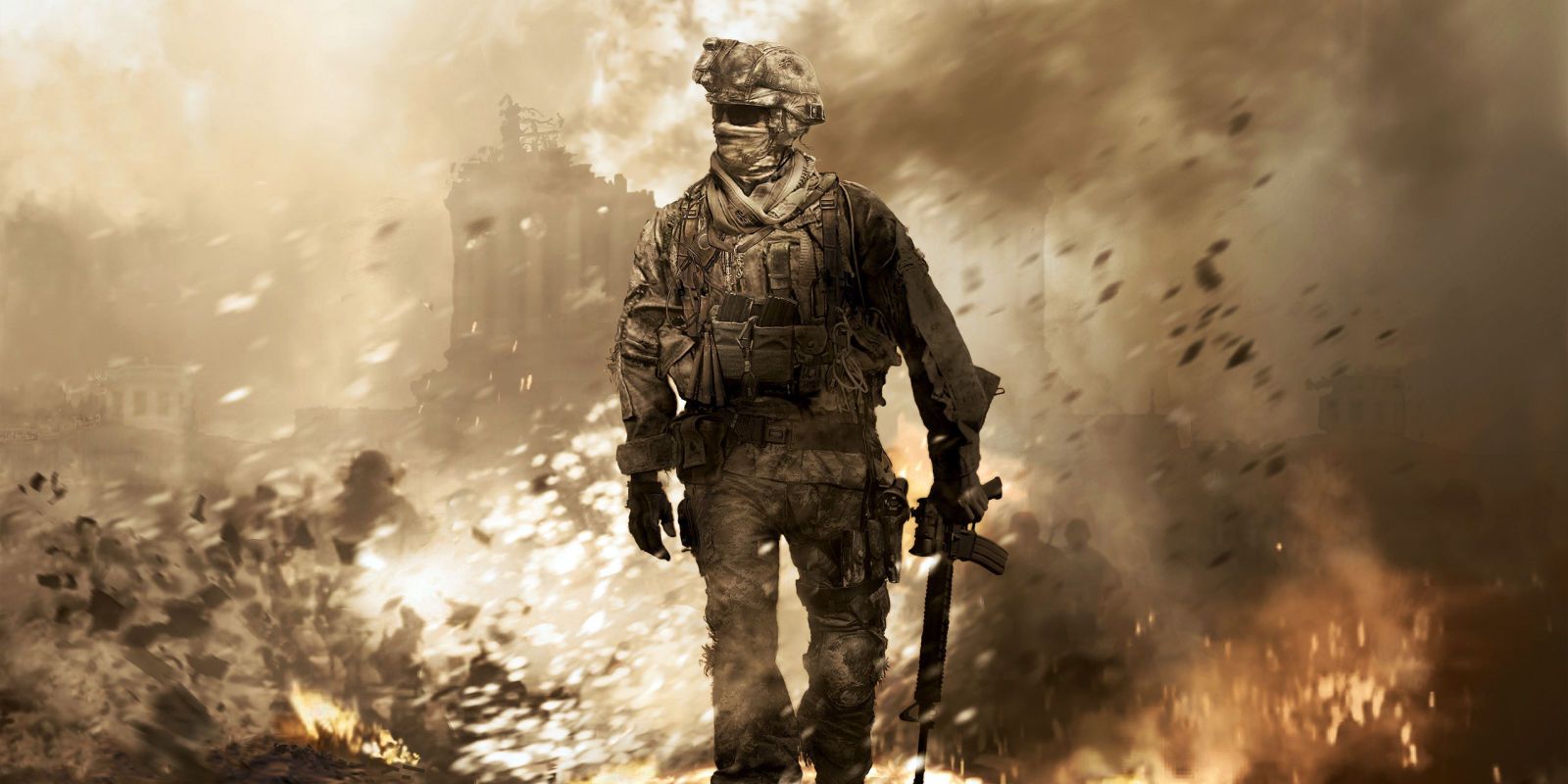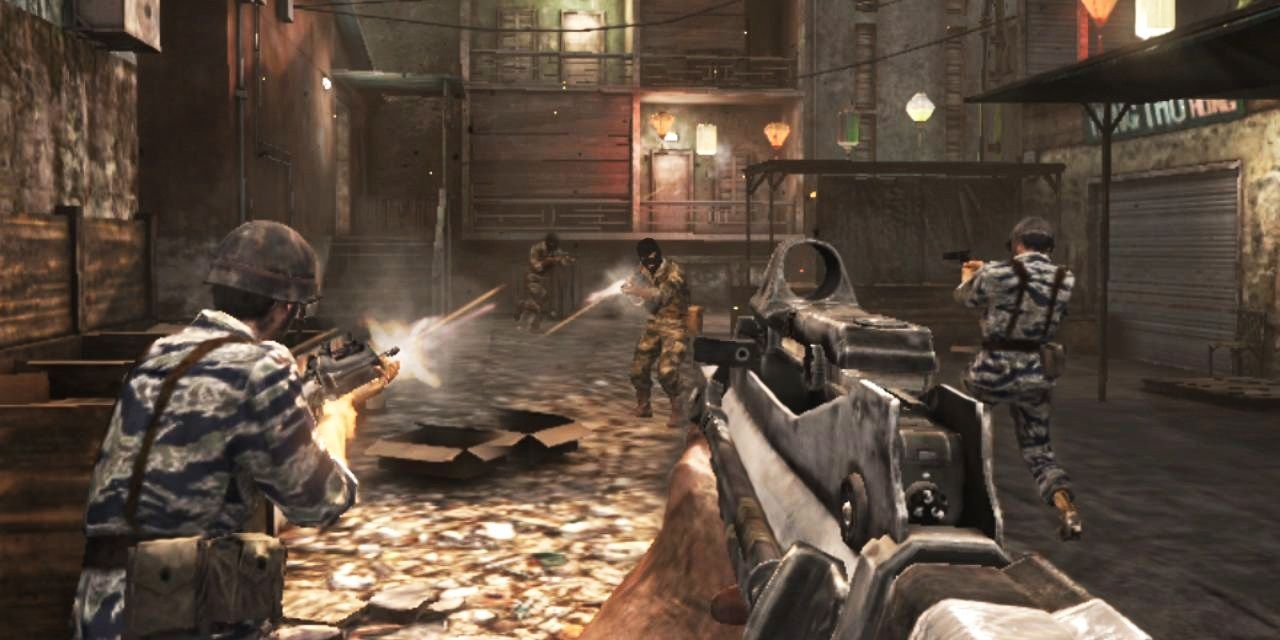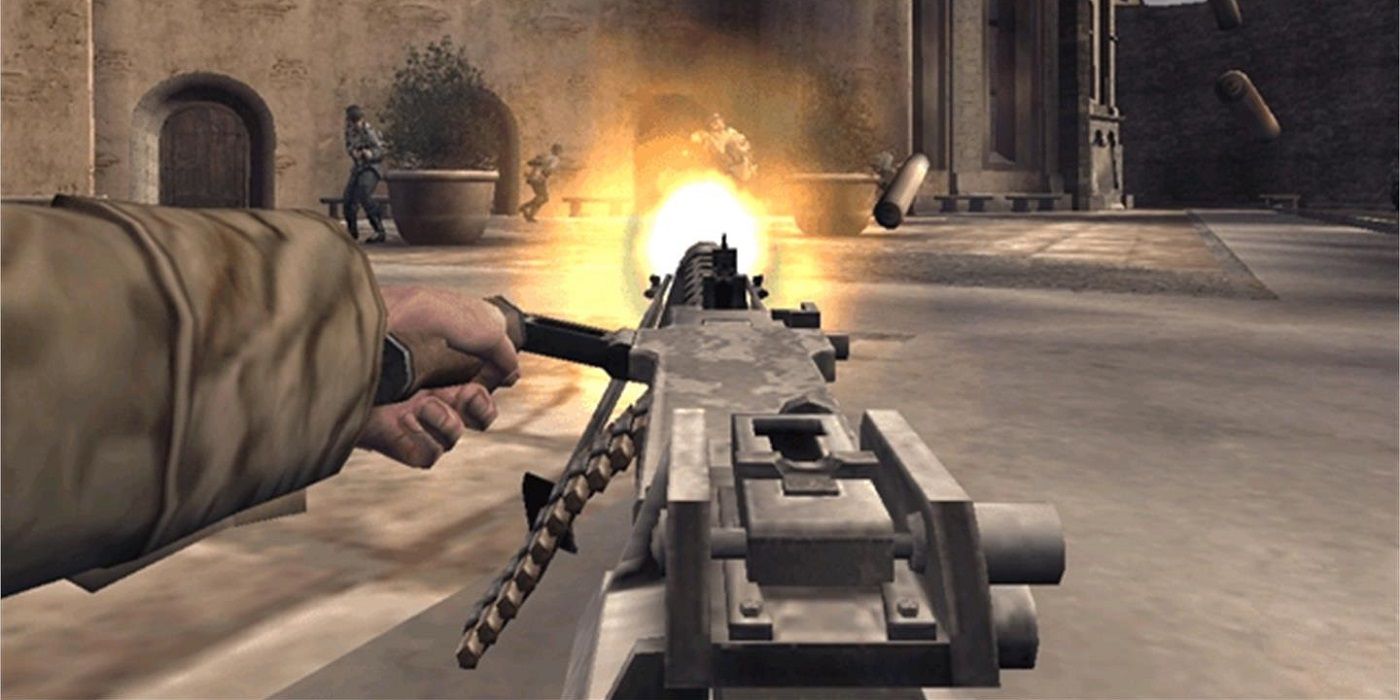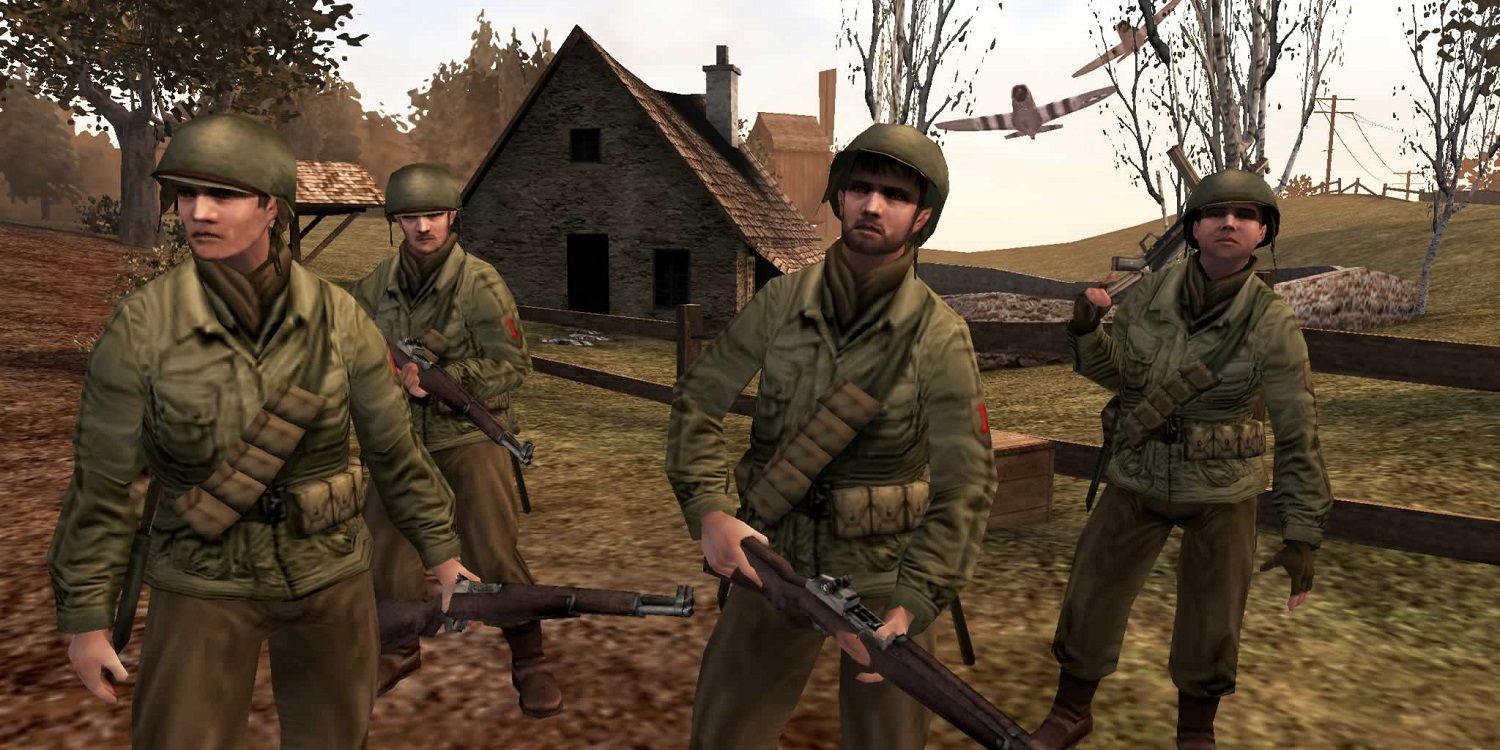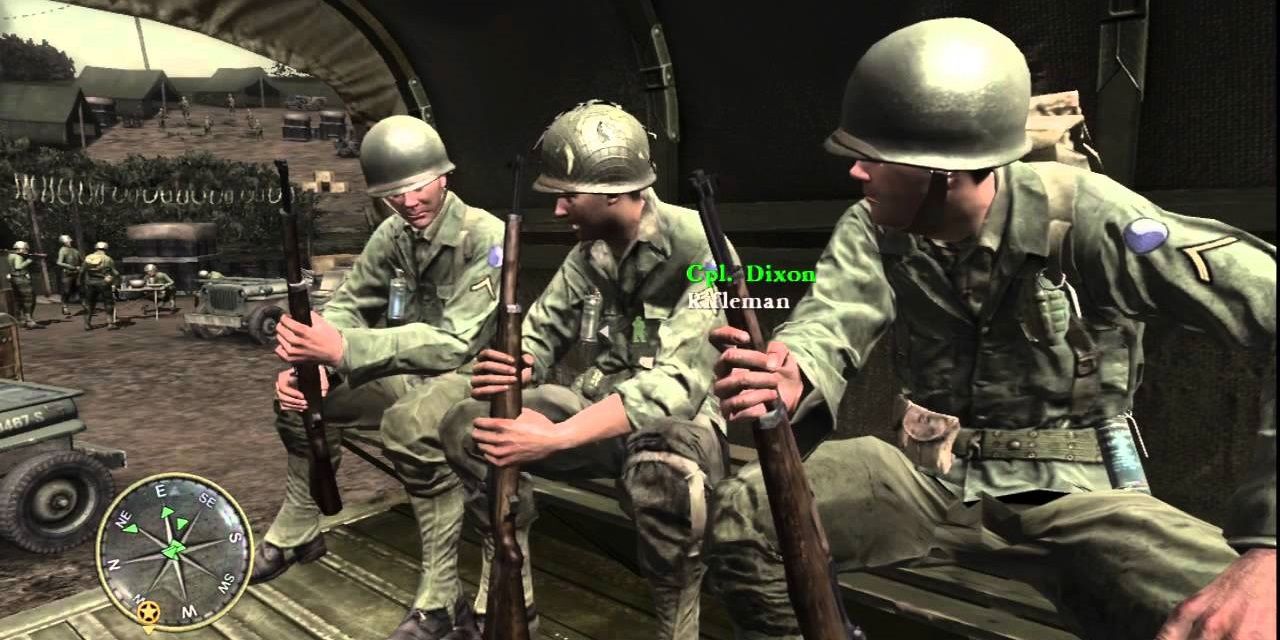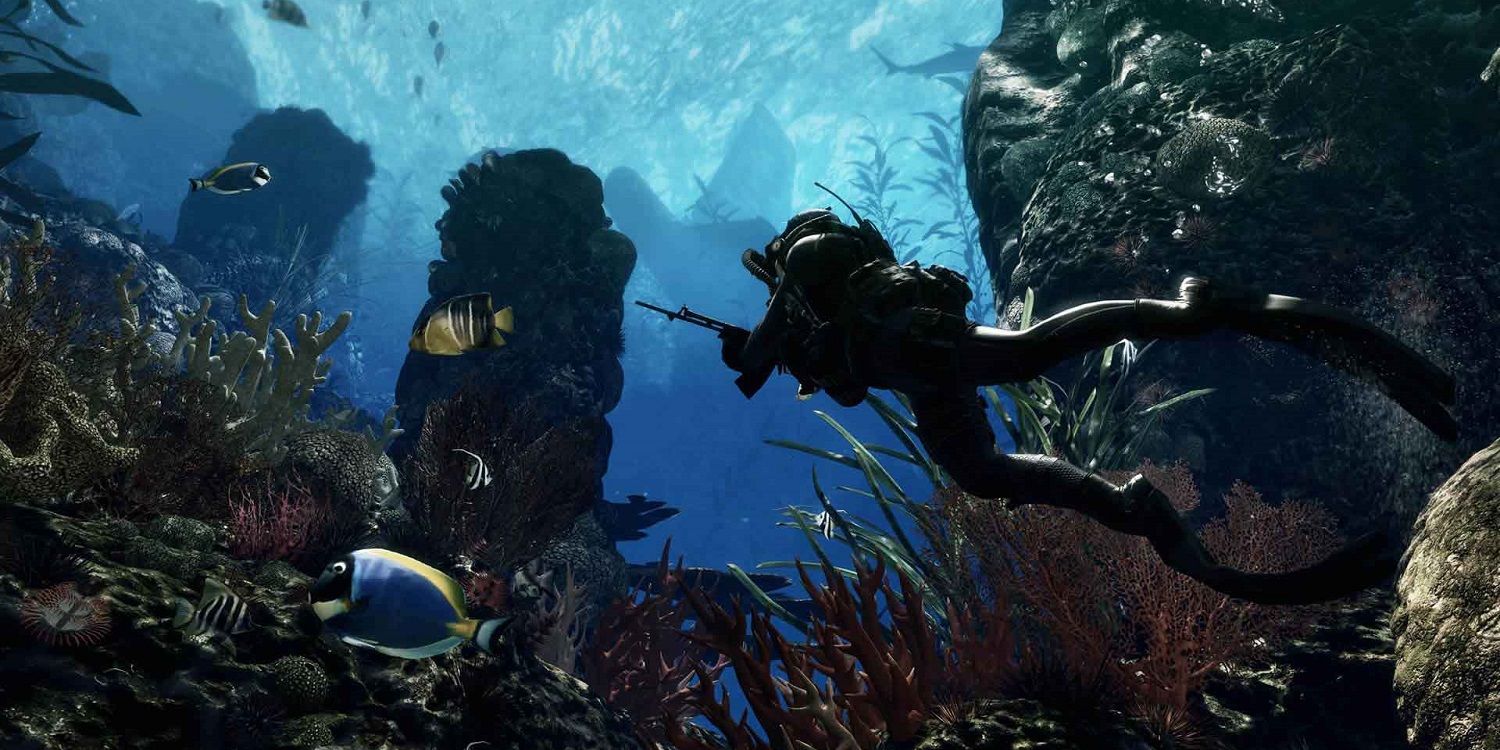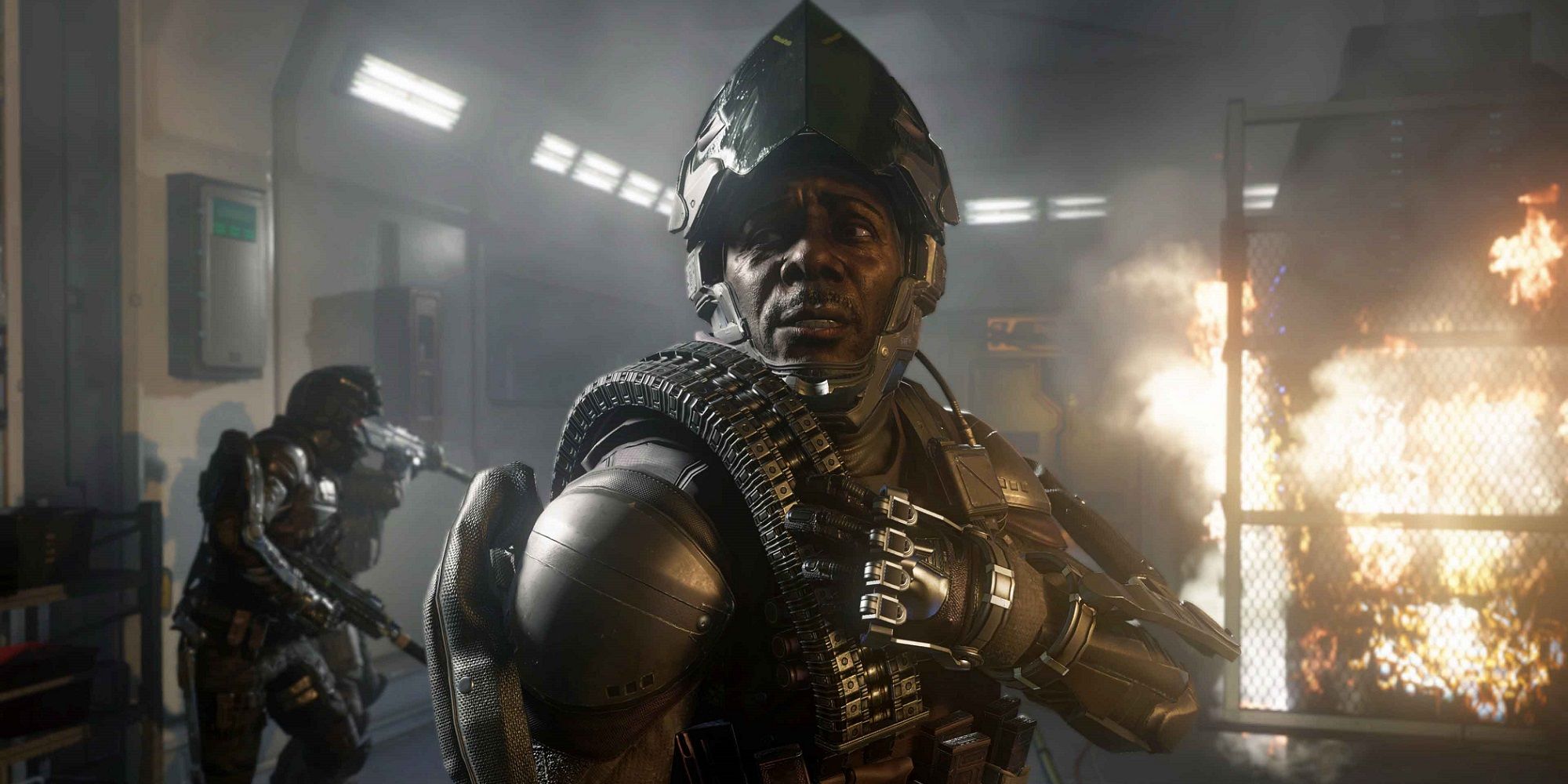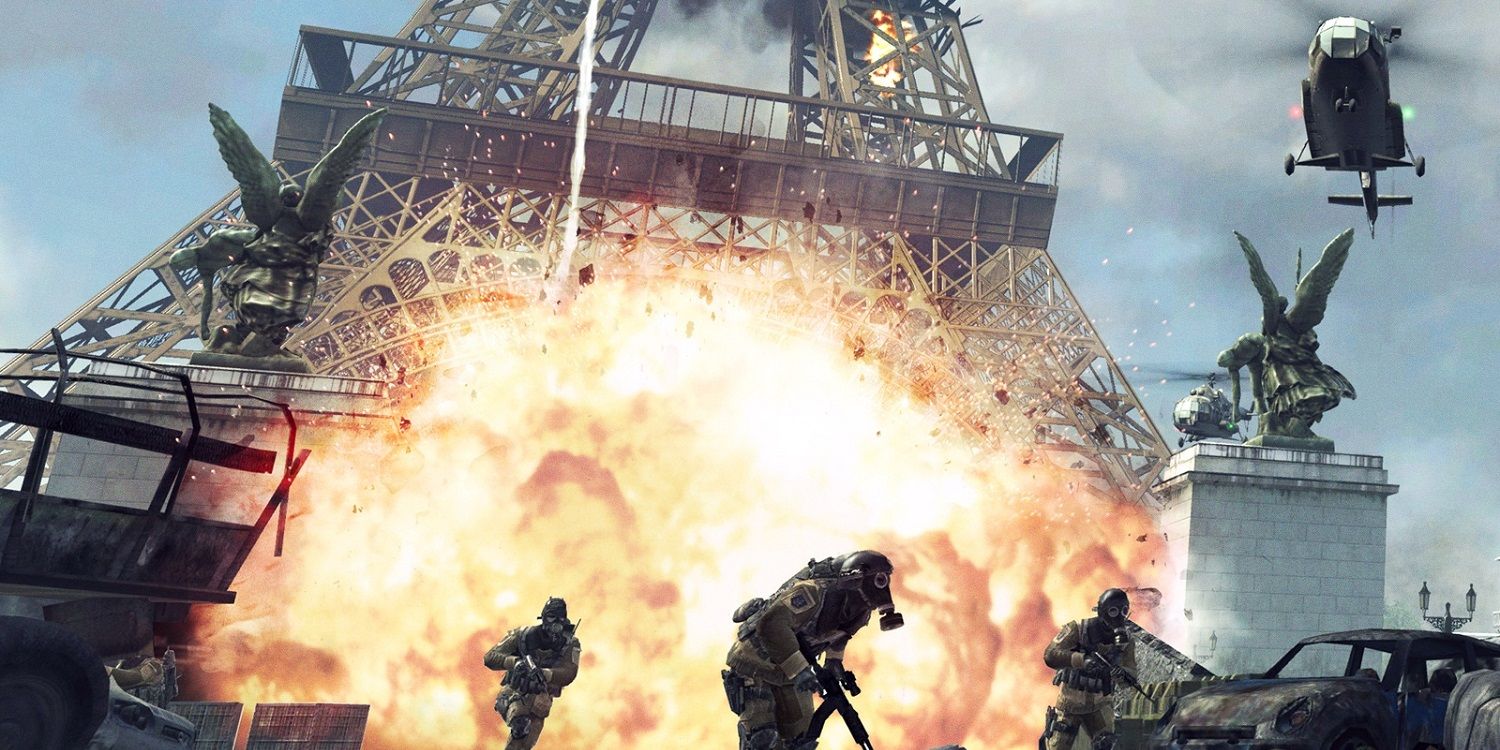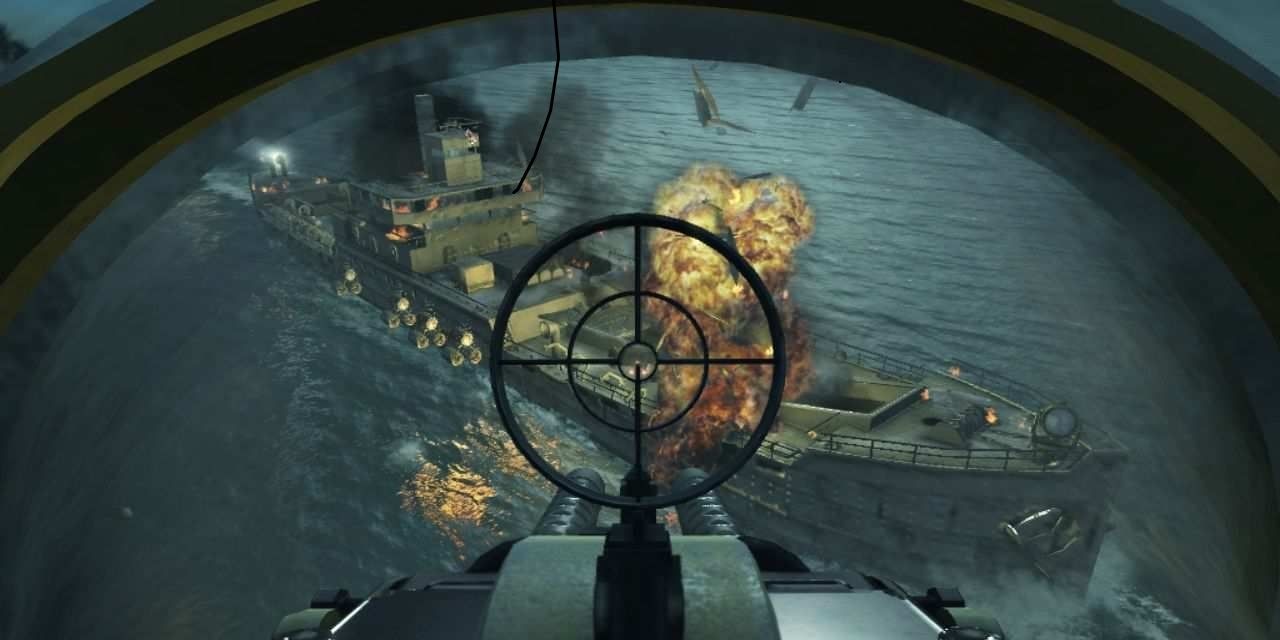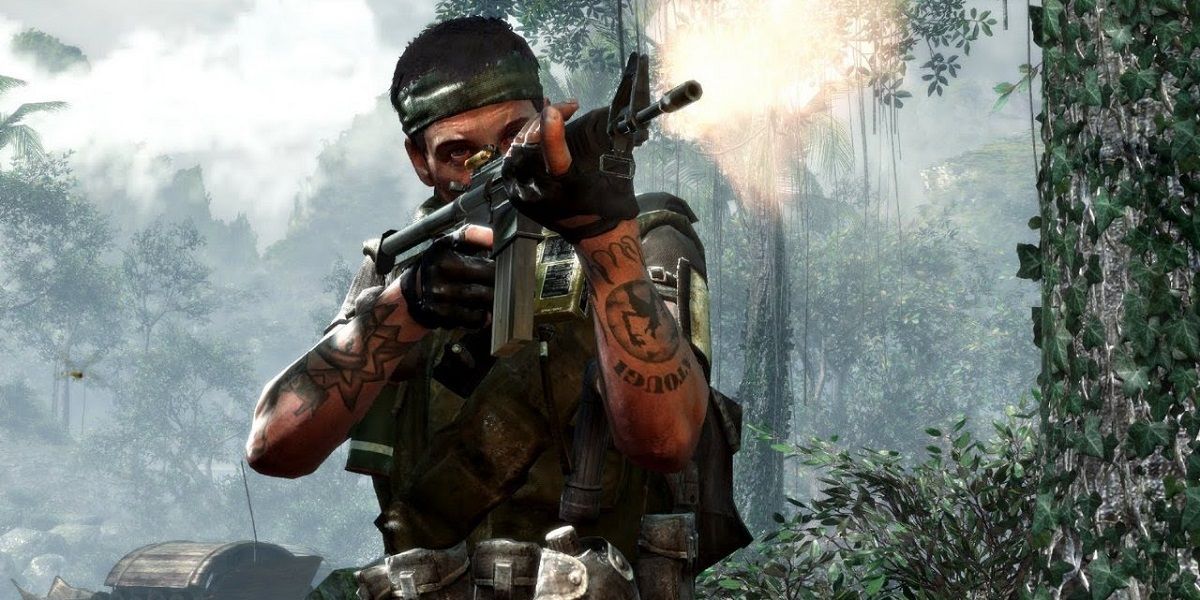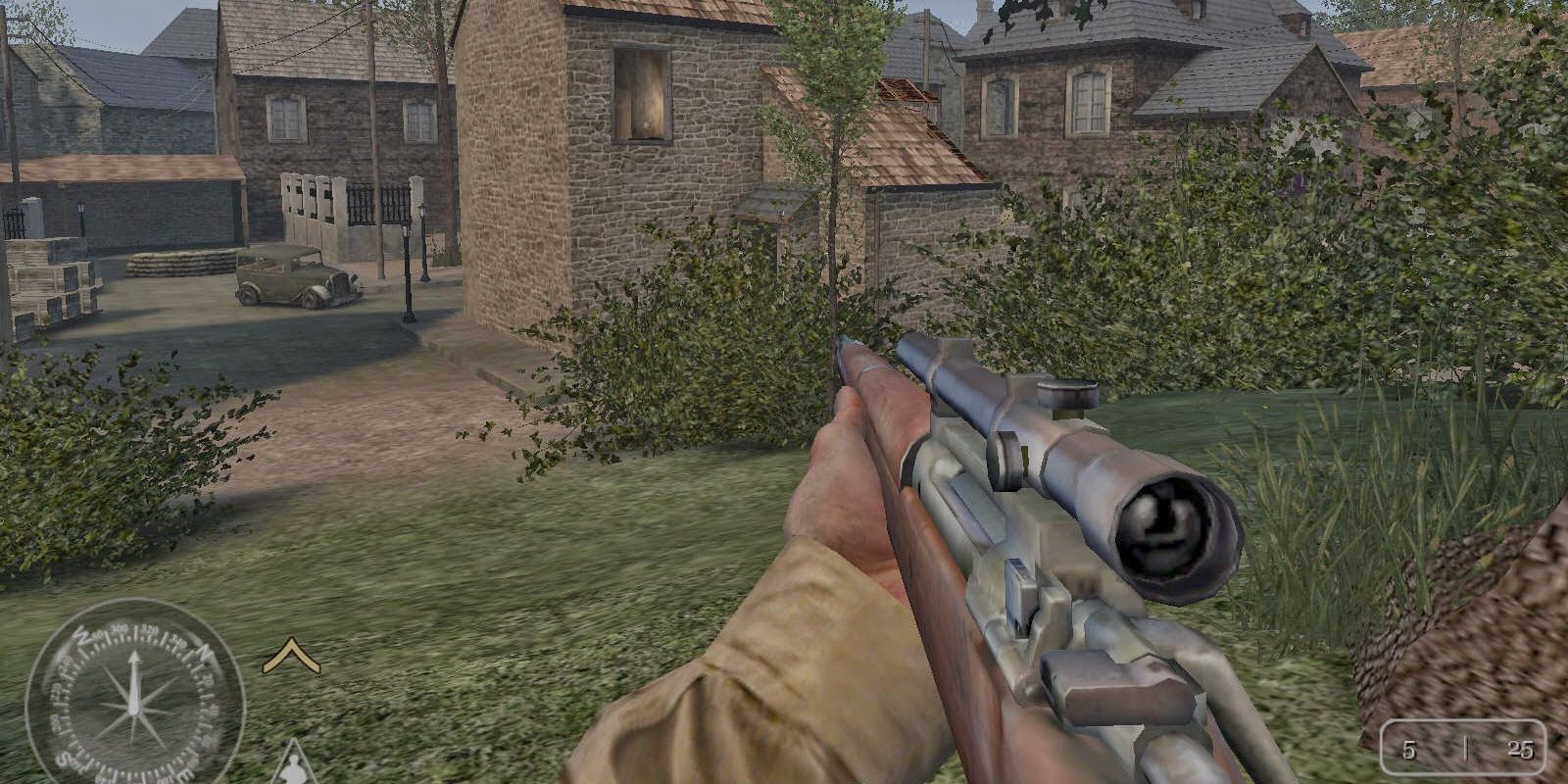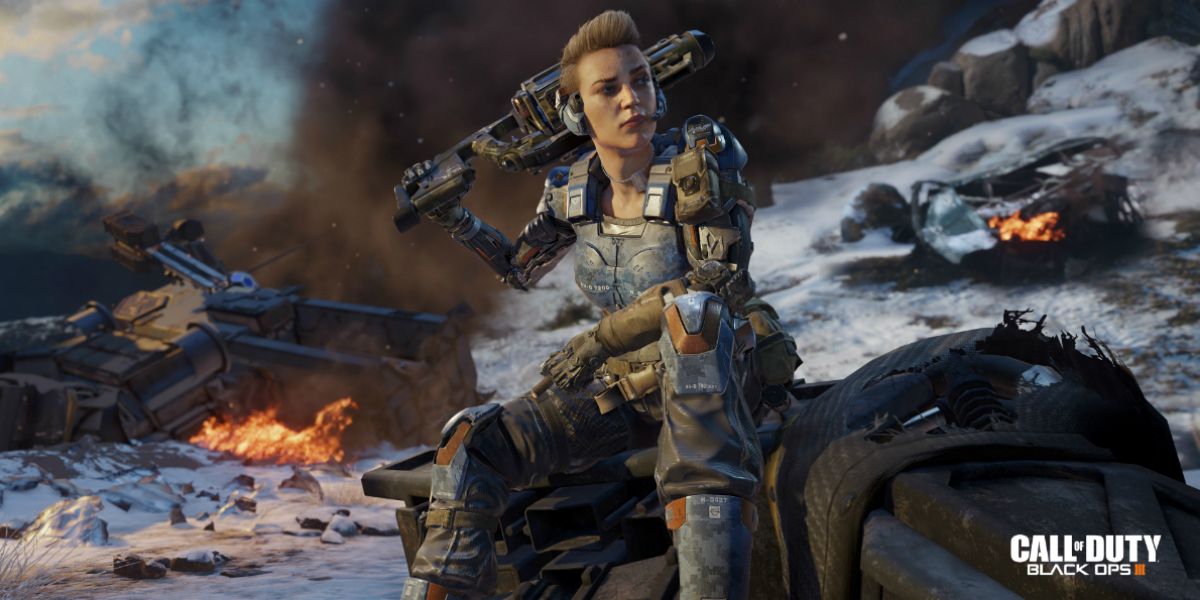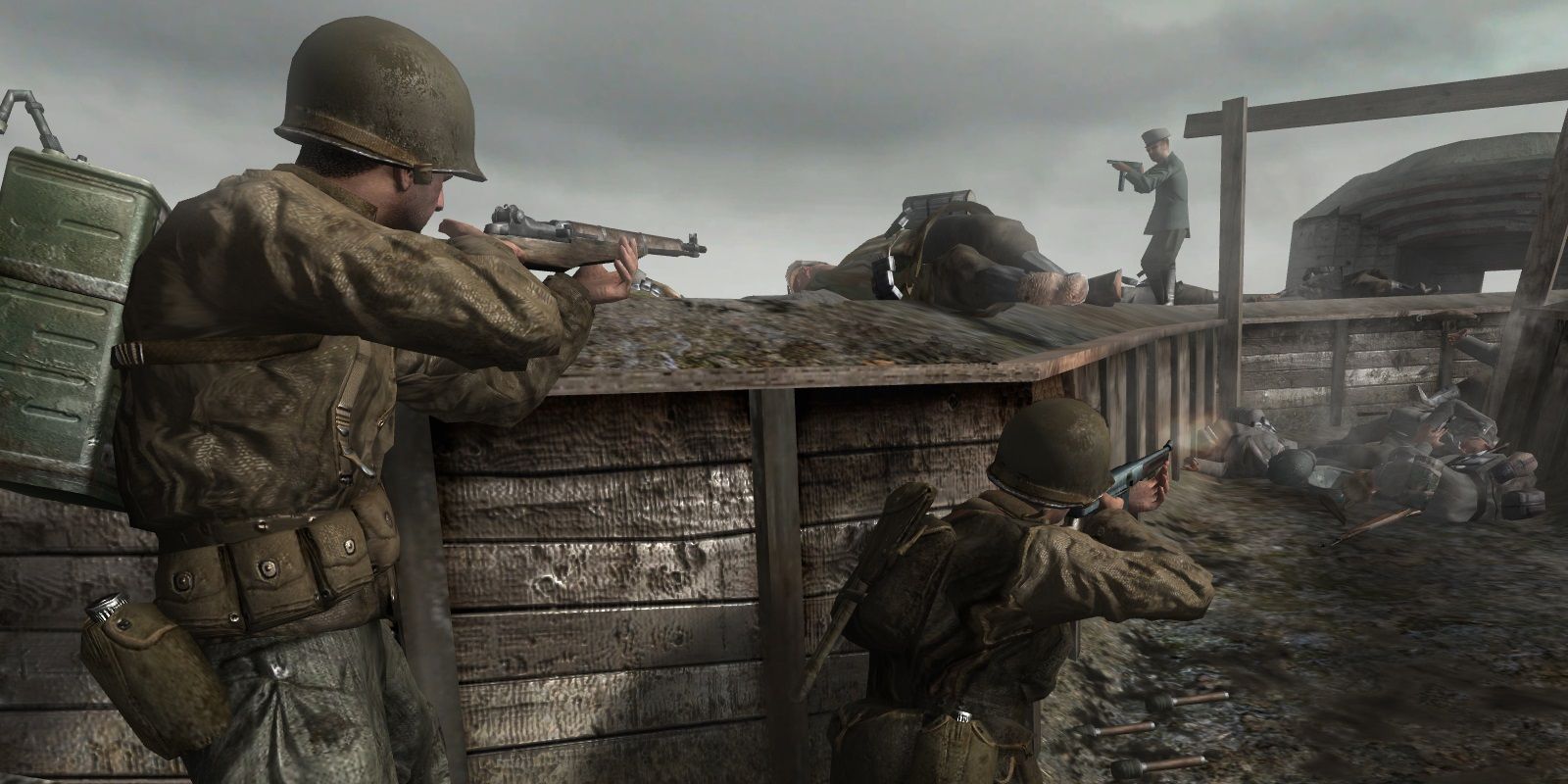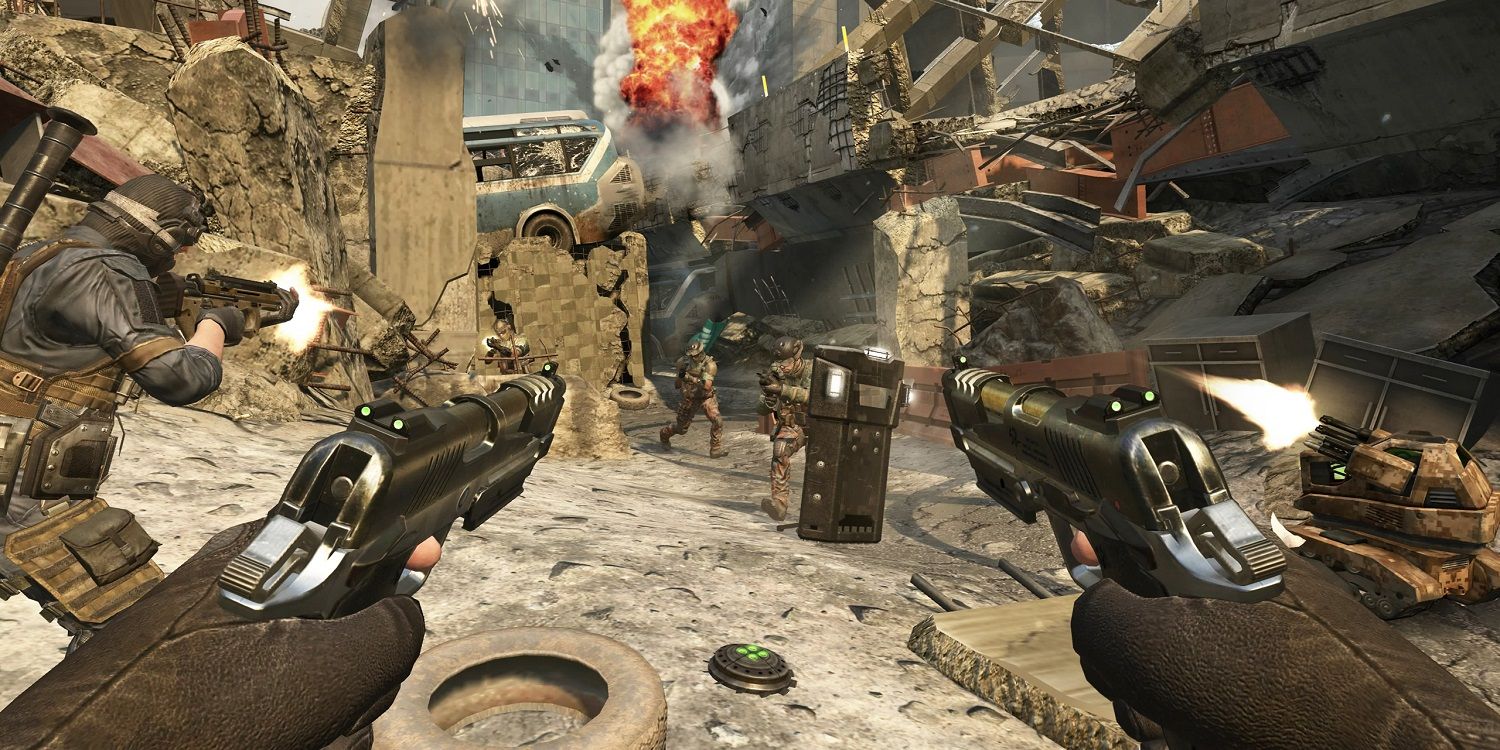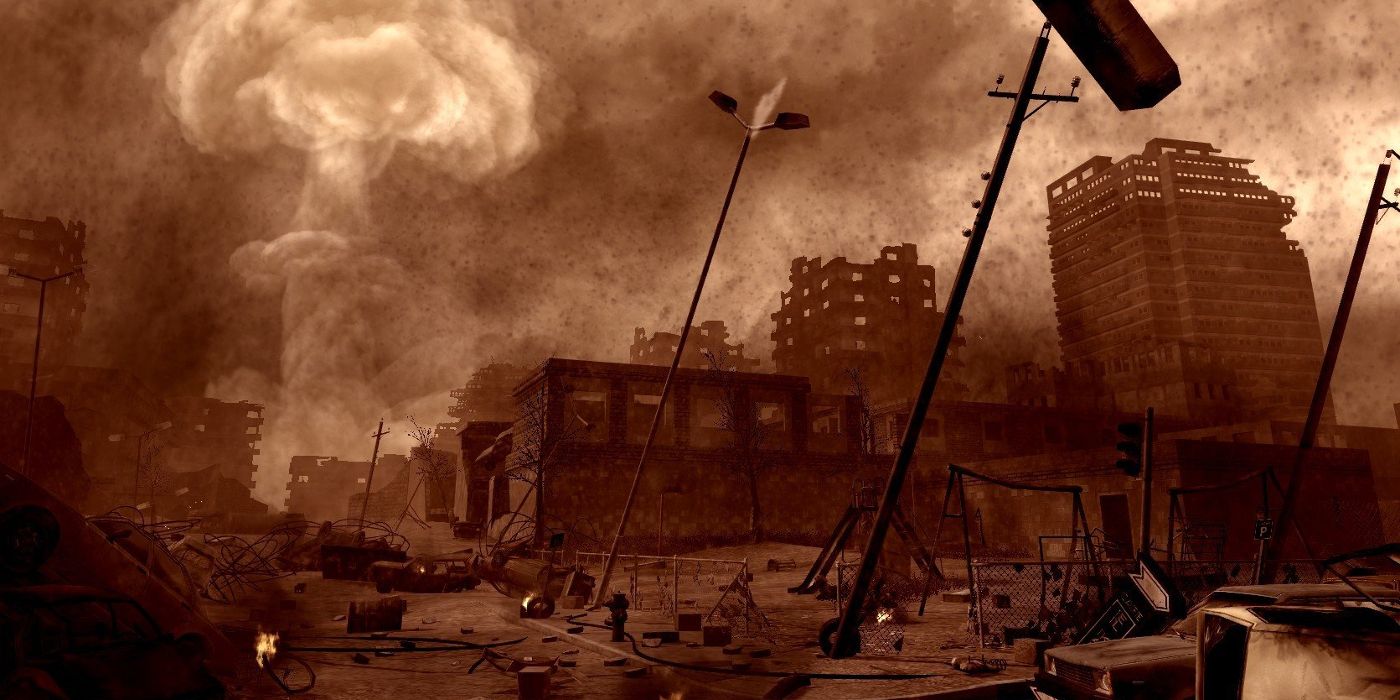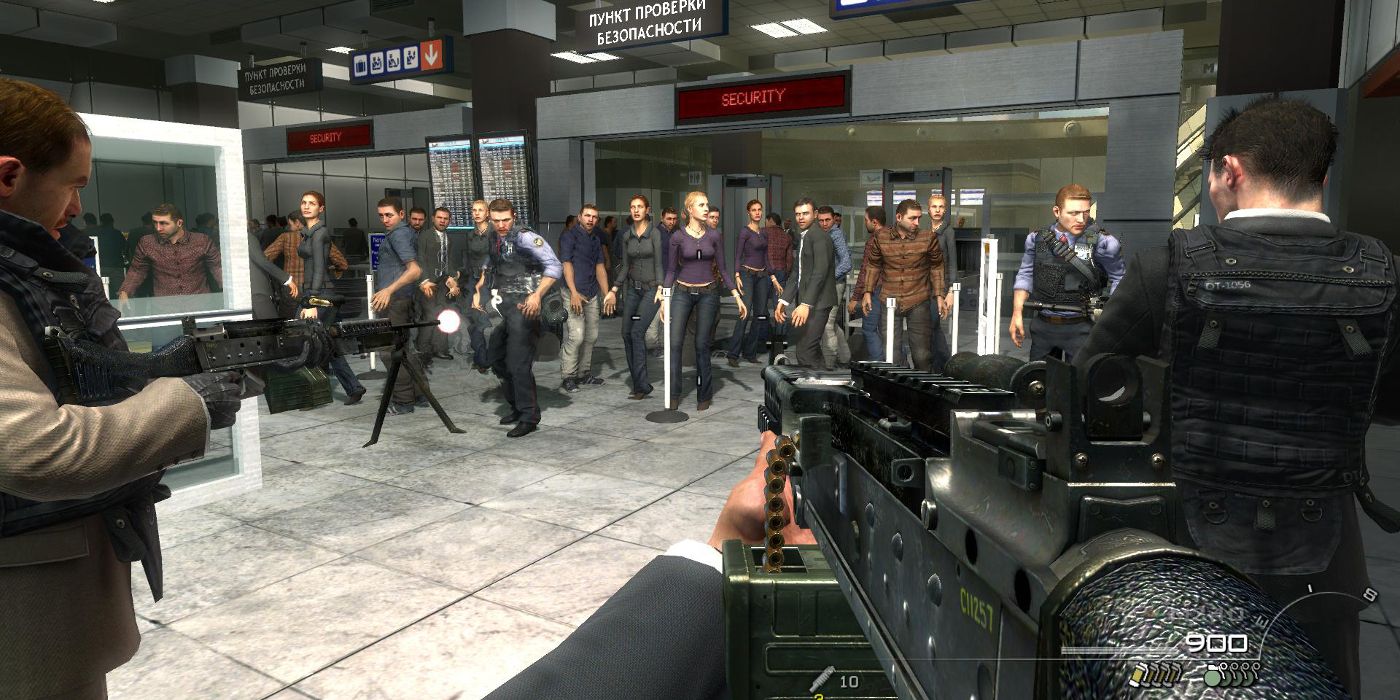The biggest video game series on the planet is Call of Duty, a series which has proven to be the definitive gaming franchise of the past decade. The series made its debut way back in 2003, but it shows no sign of slowing down, with millions of players still playing 2015's Black Ops 3, and a bold new entry on the horizon. Call of Duty: Infinite Warfare is scheduled for a November 2016 release, and looks to shake up the formula by bringing the action to colonies in outer space.
Call of Duty has held its position as the dominant First Person Shooter franchise thanks to its fast-paced story modes, tight shooting mechanics, and addictive multiplayer suites. We don't know for sure what the future holds for the tried-and-true war series, but let's take a look at its past, at all of the mainline titles, as well as a couple of high-profile spin-offs for consoles and handhelds. Here is Every Call of Duty Game, Ranked.
15. Call of Duty: Black Ops Declassified
Every great franchise has a low point. Devil May Cry 2, Resident Evil 6, the last half-hour of Mass Effect 3... In a series like Call of Duty, where the highs are marvelously wonderful, its lowest point is a spectacular misfire. Call of Duty: Black Ops Declassified launched on November 13th, 2012, the same day as Black Ops II. In theory, the single-player campaign of Declassified would bridge the gap between Black Ops I and II, filling out the lore of the series and expanding its universe. In practice, the game could be completed in about an hour, its narrative was thin to the point of non-existence, and the gameplay was clearly a shoddy copy-and-paste job of the mechanics of Resistance: Burning Skies, by the same developer.
The Playstation Vita was tailor-made for handling FPS titles. Burning Skies was a decent launch title for the console, but Black Ops Declassified was a huge step back, with uninspired level design, tiny multiplayer maps, and gameplay that just wasn't true to the Call of Duty brand. For Vita owners, the first (and last) great original First Person Shooter for the system would be 2013's Killzone: Mercenary, which proved that the system was more than capable of handling a top-tier shooting experience.
14. Call of Duty: Finest Hour
The original Call of Duty was developed for PCs in 2003, but it was too technologically advanced to be ported to consoles like the PS2, at least not without severe compromises. Instead, publisher Activision tasked developer Spark Unlimited with creating an original spinoff for the console market. The resulting game, Call of Duty: Final Hour, gave us World War II action on a smaller scale than its PC-exclusive brethren, but still did justice to the young and growing brand.
Like its PC counterpart and other WWII CoD titles, Finest Hour offered players the chance to step into the shoes of allied soldiers on all fronts of the war, from an American soldier on the Western Front, to a British trooper in Africa, as well as a Soviet campaign set during the Battle of Stalingrad. Finest Hour won the most praise, however, for its multiplayer suite, which allowed up to 32 players to shoot it out over the internet on the Xbox version (16 on PS2). The map size and player count were quite impressive for its day, and few games even in 2016 bother to facilitate matches with that many players.
13. Call of Duty 2: Big Red One
While franchise creators Infinity Ward were hard at work on Call of Duty 2 for PC and Xbox 360, developer Treyarch, alongside Gray Matter Interactive, were developing their own game for the older consoles (PS2, Xbox, and Gamecube). Call of Duty 2: Big Red One may only have been a side-project next to the true CoD 2, but Treyarch worked their hardest to make the game stick out from its predecessors. Unlike previous CoD titles, Big Red One had a narrative focus on one group of soldiers, members of the 1st Infantry Division, also called the Big Red One.
Big Red One was always going to be overshadowed by its high-profile, HD big brother, but it still managed to live up to the Call of Duty name, offering a single-player story with grand setpiece moments, especially by the standards of the inferior PS2/Xbox hardware. Also, the game's voice cast included actors like Rick Gomez and Michael Cidlitz, who had previously starred in the HBO miniseries, Band of Brothers. Finally, the game was narrated by none other than Mark Hamill, who had co-starred alongside Lee Marvin in the iconic war film, The Big Red One. Fun semi-related fact: that film was directed by Samuel Fuller, who had actually served in the legendary Army unit.
12. Call of Duty 3
In 2006, the folks at Infinity Ward were hard at work on Call of Duty: Modern Warfare, but Activision wanted a new game for 2006. The publisher had Treyarch develop Call of Duty 3 as a console exclusive; to date, it remains the only mainline CoD title to never see release on the PC.
Development on CoD 3 was completed in under a year, and, to be honest, it shows. CoD 3 isn't a terrible title, and its shooting mechanics are as solid as in the original Infinity Ward entries, but it lacks the polish of those games, replacing IW's superb pacing and balanced firefights with an unwelcome multitude of superfluous Quick Time Events; it was 2006, and QTEs were the big fad of the day. Looking back at CoD 3, it's no wonder that, for many years, Treyarch was seen as the "B-Team" CoD developer. It would take years, and multiple Black Ops titles, for Treyarch to emerge as the fan-favorite CoD team.
11. Call of Duty: Ghosts
By 2013, Treyarch had won back the crowd, making up for the underwhelming CoD 3 with the awesome spy-game narrative of Black Ops and the futuristic Black Ops 2. Infinity Ward, on the other hand, had imploded, with the loss of nearly half their staff following the controversial firing of studio leaders Jason West and Vince Zampella. The newly-reformed Infinity Ward's next title after the merely-decent Modern Warfare 3 would also be the first CoD game on the PS4 and Xbox One. However, despite some bells, whistles, and "Next Generation Fish AI," Ghosts turned out to be par for the course for the Call of Duty brand.
Rather than picking up after the end of Modern Warfare 3, Ghosts opted to tell a brand new story, one that was decidedly out-of-continuity with the older titles. In Ghosts, America's military and many of its cities are wiped out by a South American coalition. The premise of "America on the ropes" stretches plausibility to the breaking point, but it leads to some interesting gunfights and unique settings, like a city in the midst of a catastrophic flood, or the climactic train level.
The multiplayer was still as fun as ever, though the game was bogged down by a lack of innovation, and a generally lived-in feel. Overall, this was the year that Call of Duty was beat out by EA's Battlefield 4 and its massive multiplayer suite, which is still massively played to this day.
10. Call of Duty: Advanced Warfare
After the decent, if underwhelming, Ghosts, it was obvious that Call of Duty was in need of an overhaul. Advanced Warfare would fall short of revitalizing the brand, but it did present some cool ideas which managed to keep the franchise afloat until the game-changing Black Ops 3.
Advanced Warfare's story, while pretty basic, was given a significant shot in the arm by the presence of a fully motion-captured Kevin Spacey, albeit in the role of a cookie-cutter mentor-turned-villain with ambitions of world domination. On the gameplay front, AW introduced a grappling hook to CoD's bag of tricks, though there was only a single level which made full use of the grand movement potential of the device. Had the rest of the game been designed around the grappling mechanic, AW would easily be one of the best games in the franchise. Alas, 'twas not to be. AW also brought powered exosuits to the franchise, offering players greater mobility in firefights and more opportunities for aggressive playstyles, though it was more than a bit clunky compared to its rival that year, Titanfall. That game was developed by Respawn Entertainment, which had been founded by ex-members of Infinity Ward after the aforementioned purge of 2010.
9. Call of Duty: Modern Warfare 3
Modern Warfare 3 was severely impacted by the exodus of many Infinity Ward staff in 2010. Ultimately, the crew at Sledgehammer Games had to pitch in so that MW3 could meet its release date; unfortunately, this meant that work on their third-person action/adventure game set during the Vietnam War had to be cancelled.
The end result is a finale to the Modern Warfare trilogy which, while all the pieces are in place, is a decidedly lesser game than its predecessors -- like a straight-to-video sequel to a big summer blockbuster. The story is wrapped up in hasty and sloppy fashion, and the gameplay gimmicks are mostly just ripped from earlier titles. It certainly has its moments, such as the genuinely heart-wrenching death of a key character in a pivotal scene, and a handful of standout action sequences, but the story mode generally feels too familiar to truly stand out.
MW3's saving grace is the return of Spec Ops mode from MW2, in which two players can team up either online or via split-screen to tackle cooperative challenges. This excellent mode was sorely lacking in Ghosts and Advanced Warfare, which replaced it with derivative horde modes. Maybe one day, Spec Ops will make a triumphant return to the Call of Duty fold.
8. Call of Duty: World At War
Treyarch's next title after the disappointing CoD 3 was World at War. To date, it's the final game in the series to take place primarily during World War II, and it acts as something of a goodbye to the era. The narrative bounces around a bit too quickly to be completely coherent, but the characters are defined strongly enough to keep the player engaged. It also helps that they're played by actors like Kiefer Sutherland, Aaron Stanford, and Gary Oldman, who would later reprise his role as Victor Reznov in Black Ops.
In an effort to show a realistic depiction of the so-often glamorized battles of WWII, World at War ratcheted up the level of violence to extreme levels. Unlike Modern Warfare's generally sanitary headshots and explosions, enemies in WaW would get limbs ripped off by shotgun blasts, and be utterly torn to shreds by grenades. WaW was an uncompromising look at the brutality of war, and the righteous struggle of the Greatest Generation.
Despite the realism of the campaign, WaW was also the first game in the series to include the Nazi Zombies mode. While it's practically just an Easter Egg here, the addictive horde mode would quickly become a breakout feature and one of the main selling points of future titles.
7. Call of Duty: Black Ops
After bidding farewell to World War II, Treyarch shifted gears to the Cold War for their next game, Black Ops. Opening with an action-packed version of the Bay of Pigs invasion (complete with the awesome, if anachronistic, use of Quimbara by Celia Cruz), Black Ops makes use of a clever framing device of Alex Mason (Sam Worthington) relaying the events of the game, from Cuba to Vietnam, to CIA spook Jason Hudson (Ed Harris).
While Black Ops still lacks the polish of the Modern Warfare titles, the ambition of Treyarch is evident in the variety of levels, excellent use of facial capture animation, and an intricate plotline full of twists and turns. Zombies mode returns, as well as CoD's signature multiplayer action. For the first time in the series, CoD: Black Ops allowed two local players to play the standard multiplayer suite online. This feature would be carried over to Modern Warfare 3 and beyond, and really open up party play opportunities for the series.
6. Call of Duty
The game that started it all, Call of Duty was the first project developed by Infinity Ward. IW was formed by employees who had worked on Medal of Honor: Allied Assault, and subsequently split off to develop their own WWII series.
CoD wasn't the first game to feature fine-aiming down the iron sights of guns, but it certainly revolutionized the way FPS games played, setting a precedent which endures to this day. Shooting without aiming first causes fire to be terribly inaccurate; aiming down the sights first is the only reliable way to hit your target.
Call of Duty was originally developed as a PC exclusive, but would eventually see release on PS3 and Xbox 360 as Call of Duty Classic, as part of the special editions of Modern Warfare 2. Despite being 13 years old in 2016, the original CoD holds up surprisingly well, as it lays down the groundwork that would carry the series through the next decade of gaming. Plus, it featured the debut of CoD's most badass mustache, worn by Captain John Price.
5. Black Ops 3
The most recent CoD release, Black Ops 3, is Treyarch's most ambitious game yet. It has a four-player online co-op campaign (two players locally), the biggest Zombies mode yet, and a total revamp of the basic movement systems. In a step-up from Advanced Warfare's clunky jetpack movement, BO3 lets players run across walls, double-jump, swiftly vault across cover, and more, all while still being able to shoot.
The story itself isn't quite as smart as it wants to be, but it's still a wild and unpredictable sci-fi jaunt, anchored by an excellent performance from Christopher Meloni (Law & Order: SVU, Wet Hot American Summer). Best of all, once the game is completed, it can be replayed in the "What If"-styled Nightmare mode, which tells a completely new story over the existing levels, replacing the human and cyborg enemies with a horde of zombies.
Finally, instead of nameless generic soldiers, BO3's multiplayer mode allows players to choose from a pool of nine specialists, each with their own unique special abilities. Combined with the improved movement options, Black Ops 3 really shook up the series' multiplayer foundations, making the experience wholly fresh for the first time in years.
4. Call of Duty 2
The original Call of Duty was developed originally for the PC and wouldn't see a console release for six years. The sequel, however, was developed for both PC and Xbox 360, and proved to be a killer app for Microsoft's new console. CoD 2 was the best-selling game of the console's 2005 launch, and is still fondly remembered as one of the console's first great titles.
Basically, CoD 2 was just more Call of Duty, building off that game's single-player and multiplayer foundations. The campaign showcased WWII on three different fronts, with players taking control of British, Russian, and American soldiers. The game's graphics weren't exactly state-of-the-art compared to titles like Gears of War and Resistance: Fall of Man, but they got the job done in 2005, and its online multiplayer component was a huge selling point, remaining a key destination for competitive gamers until its successor, Modern Warfare, completely changed the landscape of the genre.
3. Black Ops 2
After the implosion of Infinity Ward and the subsequently run-of-the-mill Modern Warfare 3, the pressure was on Treyarch to deliver an outstanding title for 2012. Black Ops 2 was met with a degree of skepticism for its near-future setting and ambitious single-player campaign which seemed too good to be true.
Against all odds, Treyarch delivered, and Black Ops 2 turned out to be one of the best entries in the series, and one of the standout FPS games of the last generation of consoles. The single-player campaign took cues from games like Mass Effect and Telltale's narrative-driven titles, offering a story that changed, in ways both large and small, as a result of the player's choices, leading to a wide variety of possible endings.
Multiplayer returned as good as ever, with the new Pick 10 system changing the ways combatants selected their loadouts. (SMGs were way OP, though.) Meanwhile, Zombies mode finally offered four player split-screen. While the game's performance took a hard hit from the pressure of the four-way split, it was well worth it for fans who love playing on the couch with their friends, which will always be the best way to play any multiplayer game.
2. Call of Duty 4: Modern Warfare
Call of Duty was a hit series from the start, but Modern Warfare turned it into an entertainment juggernaut, the cultural phenomenon that it is today. Although titled Call of Duty 4, this entry is really where it all began for most players. 2007's Modern Warfare was a revolution in presentation, lightning-fast narrative pacing, and shooting mechanics that felt stunningly fluid and realistic. The story mode, while light on substance, had all the energy of the biggest summer blockbusters, with massive explosions, epic shootouts, and a palpable momentum, to say nothing of that now-legendary nuclear bomb twist.
As game-changing as the single-player portion was, Modern Warfare's true influence came in the form of its multiplayer component. MW introduced a deep meta game, where player progress would be tracked across all modes, unlocking weapons and other goodies as they level up, providing a deeply satisfying and addicting gameplay loop. The game redefined multiplayer shooters, and practically every multiplayer experience to this day has borrowed from Modern Warfare's approach.
1. Modern Warfare 2
Modern Warfare may have changed the landscape, but it was the 2009 sequel, Modern Warfare 2, that truly perfected the formula. The single-player game was much more thematic than the original, with grander themes and bolder levels -- such as the controversial "No Russian" mission -- and great performances from esteemed actors like Lance Henricksen, Keith David, and Barry Pepper, among others. Naturally, it also upped the ante in terms of its settings and the scale of its firefights. "Takedown" and "Loose Ends" remain two of the best missions in any FPS game, ever.
Multiplayer saw a similar refinement, with excellent maps and balanced weapons (especially after a patch fixed the 1887 Shotgun), setting a strong benchmark for the series. The biggest addition to the game, however, was the previously-mentioned Spec Ops mode, which made a return appearance as the saving grace of the otherwise half-baked Modern Warfare 3. This split-screen (or online) co-operative mode pitted two players against a series of creative and difficult challenges.
Overall, MW2 did what every sequel should do: it refined, innovated, and mixed things up while remaining familiar to returning players. Modern Warfare 2 isn't just the best Call of Duty game; it's one of the best first person shooters ever made.
---
Do you agree with our rankings? What's your favorite Call of Duty game? Sound off in the comments!

